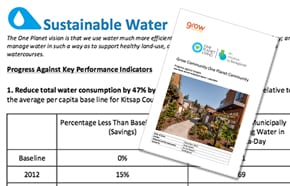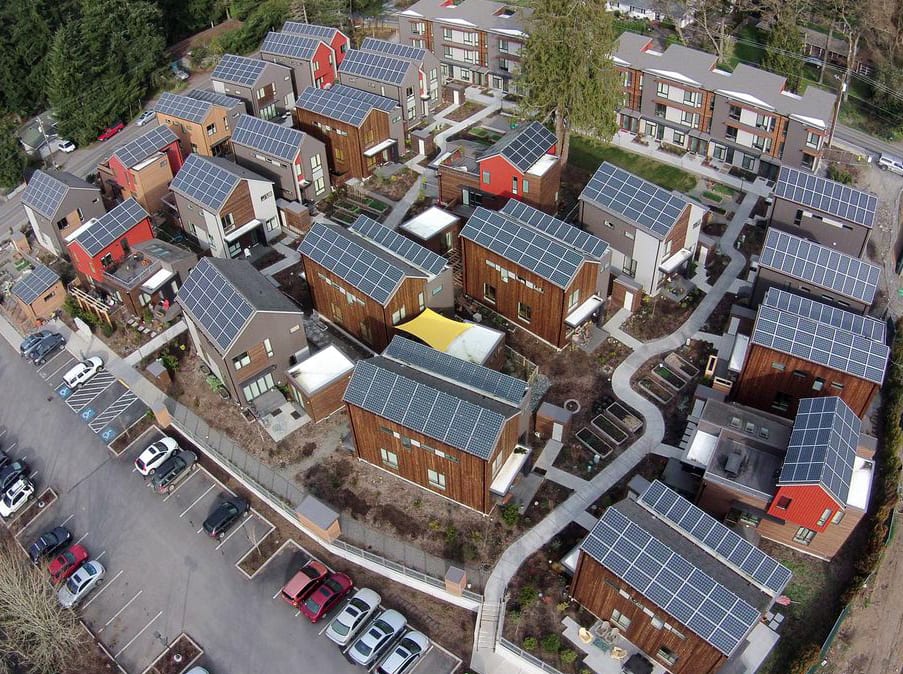Bees are the unsung heroes of a healthy ecosystem.
By supporting flowering agricultural crops and orchards, they and their fellow pollinators butterflies and birds are responsible for as much as one-third of the human food supply.
Enjoy tasty local cucumbers, strawberries, apples or even onions? Thank your neighborhood bee.
 Grow Community joins the effort to promote our island’s pollinator populations through the Pollinator Improvement Plan (PiP), now under way at Commodore Options School.
Grow Community joins the effort to promote our island’s pollinator populations through the Pollinator Improvement Plan (PiP), now under way at Commodore Options School.
The goal: to create a network of pollinator-friendly micro-environments around the island, aiding the industrious apiformes as they seek out nourishment and shelter.
The landscape plan at Grow Community phase 2, the Grove, will include pollinator-friendly native plants with a sequential bloom season to provide food and habitat through the year for pollinators – from hazelnut in late winter/early spring to Oceanspray in late summer. These plants are located throughout the project, not just in the planting beds planted with the “pollinator mix.”

Grow also features multiple canopy layers in trees, shrubs and perennials, to provide shelter options for pollinators.
Planting under the direction of renowned firm PLACE landscape architects is now underway on the site, even as we round out the first buildings nearby for residency this fall.

“Bees might not be among our ‘homeowners’ per se, but we want them to be regular visitors,” said Greg Lotakis, Grow Community project manager. “Community gardens have been one of the signature features at Grow from the start, and we want to share those gardens and fruit trees with pollinators who are more reliant on them still.”
PiP is a joint project of Commodore Options program and the City of Bainbridge Island.
During the yearlong program, students will learn about the importance of bees and other pollinators to the natural environment as well as the various threats – overuse of garden chemicals, loss of habitat – their fragile populations presently face.
 The multiage curriculum will include mapping of local bee habitats and production of a “Bee’s Eye View” video, to promote bee-friendly planting at homes and neighborhoods throughout the island.
The multiage curriculum will include mapping of local bee habitats and production of a “Bee’s Eye View” video, to promote bee-friendly planting at homes and neighborhoods throughout the island.
The video will be shown on Earth Day 2016.
Participants will also work with the city to review local landscaping and pesticide policies, to make local public lands pollinator friendly. Students will be part of this community discussion.
“Our COS students are currently conducting the research needed to produce an educational slide show about pollinators. This is a first step to educate themselves about the process, developing a depth of knowledge that will add support throughout the project,” said Carl Lindbloom, project coordinator. “Commodore Options School’s focus is on project based curriculum and community service, so PIP is the perfect fit.”
Watch for more news about Grow Community’s bee-eautiful plantings here in the coming weeks.

 Did you know:
Did you know:







 Now the PIP is featured in a new podcast on Bainbridge Community Broadcasting. In his program
Now the PIP is featured in a new podcast on Bainbridge Community Broadcasting. In his program  You can hear the podcast
You can hear the podcast 
 Grow Community joins the effort to promote our island’s pollinator populations through the Pollinator Improvement Plan (PiP), now under way at Commodore Options School.
Grow Community joins the effort to promote our island’s pollinator populations through the Pollinator Improvement Plan (PiP), now under way at Commodore Options School.

 The multiage curriculum will include mapping of local bee habitats and production of a “Bee’s Eye View” video, to promote bee-friendly planting at homes and neighborhoods throughout the island.
The multiage curriculum will include mapping of local bee habitats and production of a “Bee’s Eye View” video, to promote bee-friendly planting at homes and neighborhoods throughout the island.





 Jonathan Davis, architect for Grow’s first phase, the Village, and project manager Greg Lotakis will be featured speakers at the conference, which runs April 1-3 at the Sheraton in Seattle.
Jonathan Davis, architect for Grow’s first phase, the Village, and project manager Greg Lotakis will be featured speakers at the conference, which runs April 1-3 at the Sheraton in Seattle.



